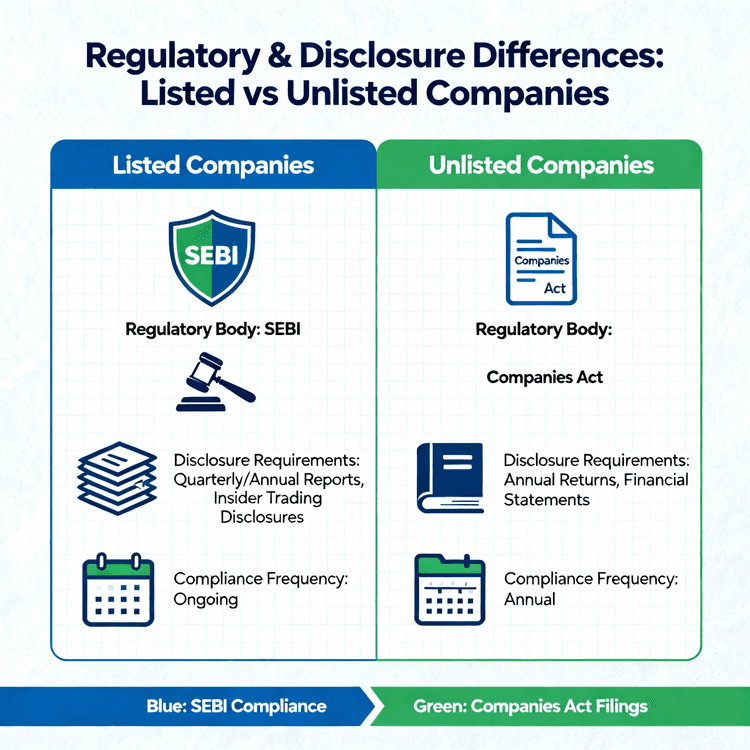The National Securities Depository Limited (NSDL) occupies a central role in India’s financial market infrastructure. Since its inception in 1996, NSDL has overseen the secure holding and transfer of dematerialized securities, facilitating the transition from paper-based share certificates to electronic book entries. Over nearly three decades, the organization has amassed a commanding institutional client base, servicing custodians, mutual funds, insurers, brokerages, corporates and government agencies.
In the financial year ending March 2025, NSDL reported total operating income of ₹1,215 crore, marking an increase of eighteen percent compared to the prior year. Net profit reached ₹594 crore, up 35% percent year on year, driven by robust fee-based revenues, high operating leverage and disciplined cost management. Return on equity exceeded forty percent, while the balance sheet remained unleveraged, underscoring both profitability and financial conservatism.
Against this backdrop, NSDL’s long-awaited public listing has generated considerable interest. Its peer, Central Depository Services Limited (CDSL), debuted on public markets in 2017 and subsequently outperformed initial valuations, delivering multibagger returns to early investors. The performance of CDSL shares over the past five years has set a benchmark and heightened expectations for NSDL’s listing. Unlisted NSDL shares in the grey market have already reflected a significant premium, suggesting anticipation of a post-listing re-rating.
Strengths
NSDL’s strengths derive from a convergence of market leadership, institutional trust, diversified revenue streams and strategic alignment with India’s digital agenda.
Pioneering Market Leadership
NSDL was the first depository introduced in India, breaking ground in 1996 and catalyzing the dematerialization of securities. Over the course of nearly thirty years, NSDL has entrenched itself as the preferred depository for institutional and high-net-worth clients. By March 2025, the depository administered more than ₹420 lakh crore of assets, accounting for close to ninety percent of the total dematerialized market value. Active demat accounts serviced by NSDL exceeded three crore, a testament to extensive reach and scalability.
➢ Diversified Revenue Streams
While transaction-based income remains a core component, NSDL has successfully broadened its revenue base to include multiple annuity and service offerings. Annual maintenance charges levied on depository participants generate a stable recurring income. Corporate action services, covering dividends, rights issues and bonus distributions, further supplement fees. The depository’s e-governance arm extends into KYC authentication, Aadhaar-based e-Sign solutions, digital document verification and e-voting services. Flagship projects such as the National Academic Depository and the Central KYC Registry represent digital public infrastructure initiatives that generate high-margin, recurring cash flows.
➢ Institutional Trust and Regulatory Integration
NSDL’s shareholder composition comprises leading financial institutions, including IDBI Bank, the National Stock Exchange and the State Bank of India. These relationships reflect deep trust and strategic alignment. Regulatory bodies such as the Securities and Exchange Board of India (SEBI) and the Reserve Bank of India have consistently recognized NSDL as a partner in digitization initiatives, ranging from electronic KYC frameworks to platforms for special economic zone administration. Participation in policy formulation and adherence to stringent audit and compliance standards confer a significant moat, as new entrants face high barriers in terms of capital, technology and regulatory approvals. NSDL’s embeddedness in India’s digital public goods ecosystem reinforces its credibility and ensures sustained engagement across both private and public sectors.
Through these strengths, NSDL presents a compelling value proposition as it prepares for a public listing. Institutional dominance, superior financial metrics, diversified business lines and regulatory backing create a foundation upon which future earnings growth and valuation re-rating can be built.
Weaknesses
Despite its formidable advantages, NSDL also exhibits structural weaknesses that require careful consideration. These areas of relative underperformance could constrain valuation multiplication if unaddressed.
➢ Limited Retail Market Penetration
NSDL’s core client base remains weighted heavily toward institutional and high-net-worth segments. In contrast to CDSL, which has rapidly expanded among first-time investors and Tier II/III markets, NSDL added fewer retail demat accounts in fiscal year 2024-25. The retail investor cohort in India has emerged as a growth engine for capital markets, driven by increased financial literacy, digital brokerage platforms and the gamification of trading. NSDL’s systems and user interfaces are often perceived as more formal and less user-friendly than those of its peer, thereby creating an opportunity cost in terms of retail traction.
➢ Revenue Concentration and Market Cyclicality
A sizable portion of NSDL’s revenues is from transaction processing fees and annual maintenance charges, both of which correlate with market activity levels. Prolonged periods of market downturn or subdued initial public offering pipelines could exert pressure on volumes and account openings, thereby impacting fee income. Although digital public infrastructure and e-governance services offer more stable cash flows, they do not yet match the scale of core depository revenues.
Opportunities
The listing of NSDL presents several avenues for future growth and value creation. By capitalizing on emerging trends and leveraging existing capabilities, NSDL can unlock incremental revenue streams, enhance market reach and deepen strategic relevance.
➢ IPO-Driven Valuation Re-rating
A successful public offering represents a pivotal catalyst for NSDL. Given its strong earnings base and robust cash flow profile, market participants are likely to ascribe a premium valuation multiple, particularly if IPO pricing is set at an attractive level. Historical precedent from CDSL’s 2017 listing underscores the potential for sustained outperformance: CDSL delivered returns in excess of seven-hundred percent over five years for early investors. Listing proceeds can also be deployed to finance technology investments, strategic acquisitions and expansion into adjacent services. Moreover, the introduction of public shareholders enhances corporate governance disciplines and transparency, factors that institutional investors often reward with valuation multiple uplifts.
➢ Expansion within Digital Public Infrastructure
NSDL’s role in managing critical digital public goods positions it to benefit from India’s ambitious digitalization agenda. Beyond the existing Central KYC Registry and National Academic Depository projects, the depository can extend its platform to additional domains such as health records repositories, insurance policy dematerialization, environmental social and governance disclosures, and tokenization of assets via smart contracts. Each of these initiatives carries the potential for subscription-based, data analytics and licensing revenue models.
➢ Leveraging Retail and Corporate Growth
India’s retail investor population continues to expand rapidly, driven by regulatory reforms, demographic shifts and the proliferation of low-cost online brokerages. Concurrently, the startup ecosystem and corporate sector are witnessing a surge in equity capital raises, rights issues and bond issuances. NSDL can leverage its institutional credibility to forge partnerships with banks, brokerage firms, wealth tech platforms and corporate treasury teams.
Through these opportunities, NSDL can sustain long-term growth, broaden its service portfolio and justify an elevated valuation profile post-listing. A proactive approach to strategy execution will be critical to translating these prospects into measurable outcomes.
Threats
Despite compelling strengths and promising opportunities, NSDL must navigate a series of threats that could impede growth, erode market share or depress valuation multiples.
➢ Heightened Regulatory Scrutiny
Post-listing, public investors may demand even greater detail on governance structures, related-party transactions and cybersecurity frameworks. Any proposals to limit cross-shareholdings between stock exchanges and depositories could necessitate corporate restructuring or divestitures. Regulatory initiatives aimed at capping fee structures or mandating greater competitive neutrality in depository services could compress margins.
➢ Market Volatility and Economic Cycles
NSDL’s core revenue drivers—transaction fees and maintenance charges—are intrinsically linked to the vibrancy of capital markets. A significant downturn in trading activity, a slump in primary market issuances or a broad-based economic slowdown could reduce transaction volumes and account additions. Historical evidence suggests that market contractions can last multiple quarters, thereby creating earnings headwinds. While NSDL’s diversified service lines provide partial insulation, pronounced market stress poses a material risk to near-term financial performance. Robust scenario planning, dynamic cost management and flexible pricing strategies will be important to navigate adverse market cycles.
➢ Competition from CDSL and Fintech Entrants
CDSL has demonstrated agility in capturing retail market share through partnerships with fintech brokers and user-centric mobile applications. Continued retail momentum by CDSL may amplify competitive pressures on NSDL, particularly if the latter fails to revamp its digital interfaces and customer engagement models. Additionally, fintech firms exploring tokenized assets and embedded finance could introduce novel depository-like solutions. While such platforms must eventually comply with regulatory depository requirements, early mover advantages in niche segments could erode NSDL’s growth avenues.
NSDL stands poised to become one of India’s landmark listings, building on its market leadership, strong financial performance and integral role in digital public infrastructure. The institution’s commanding institutional base, high-margin revenue streams and shareholder composition comprising marquee financial entities provide a solid foundation for value creation. Emerging opportunities in digital ecosystem expansion, retail and corporate partnerships, and strategic alliances offer avenues for sustained growth beyond core depository services. At the same time, heightened regulatory scrutiny, market volatility, technological disruptions and intensifying competition mandate vigilant risk management.


